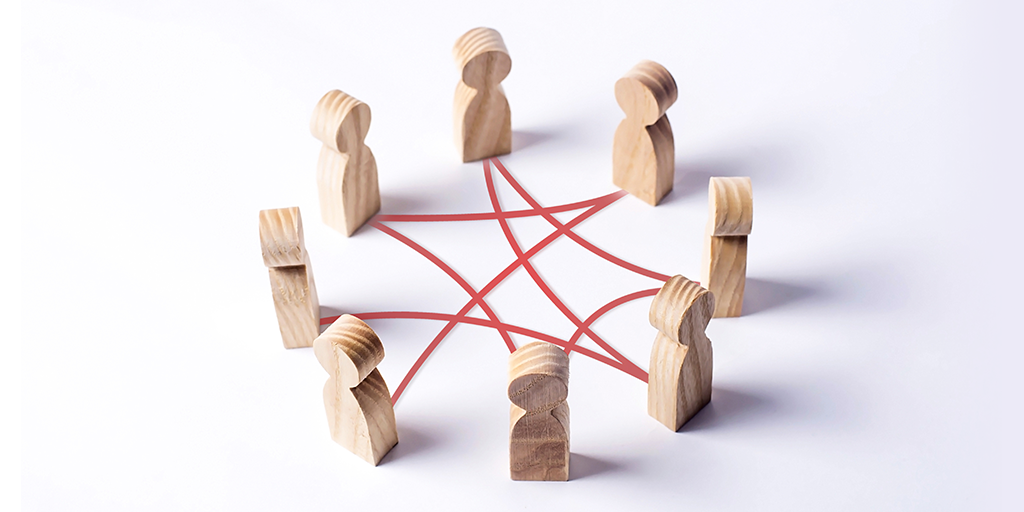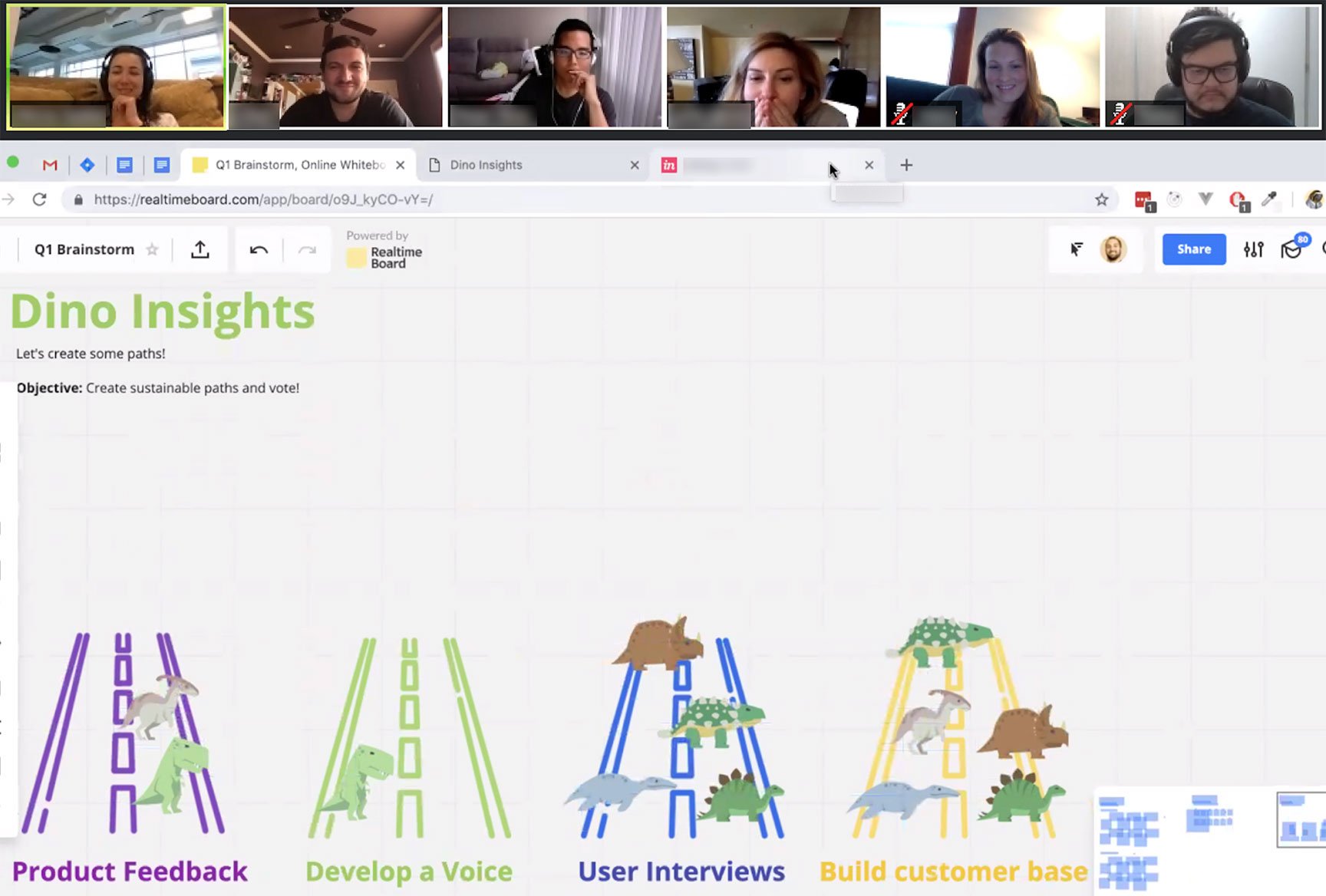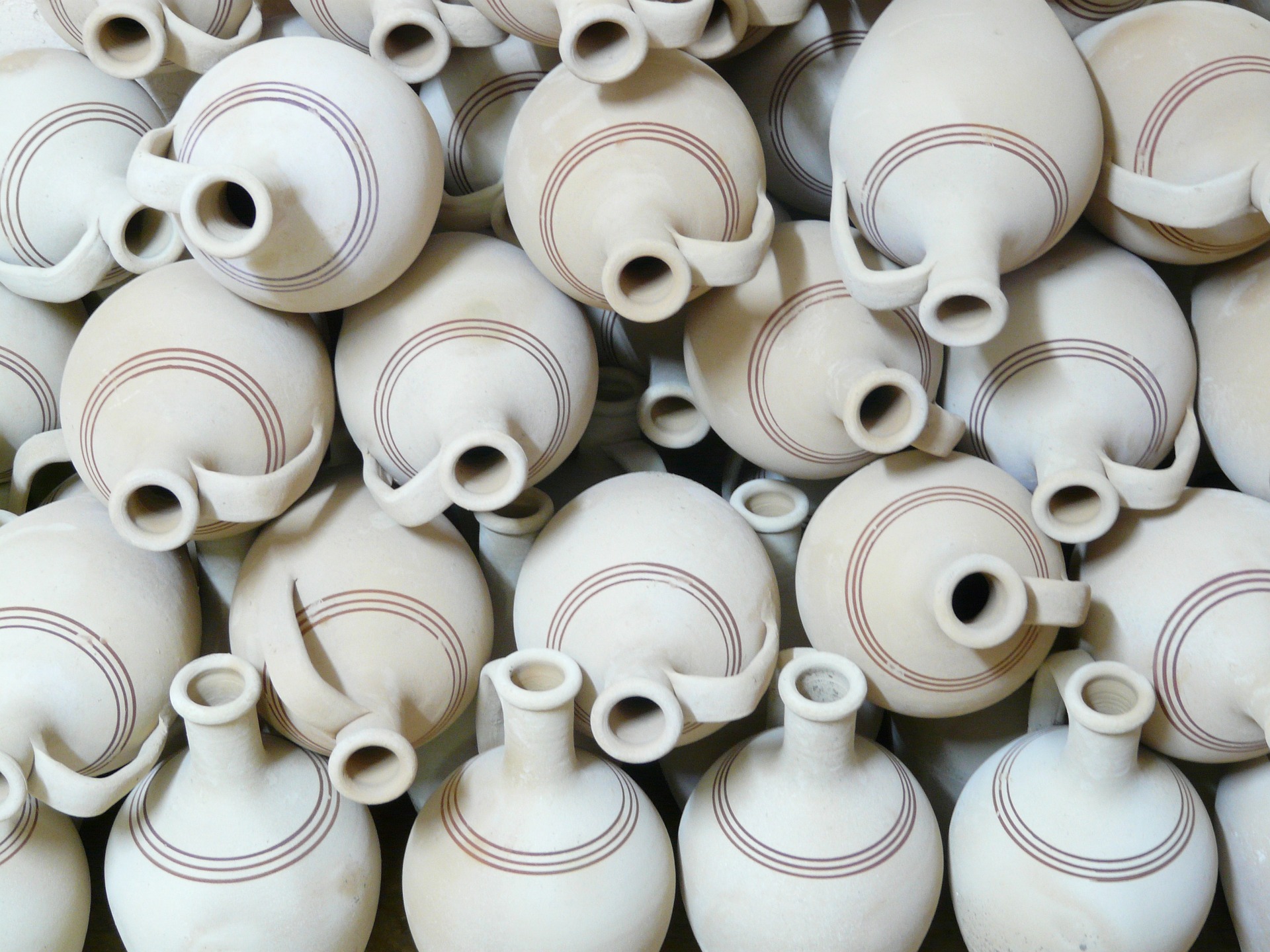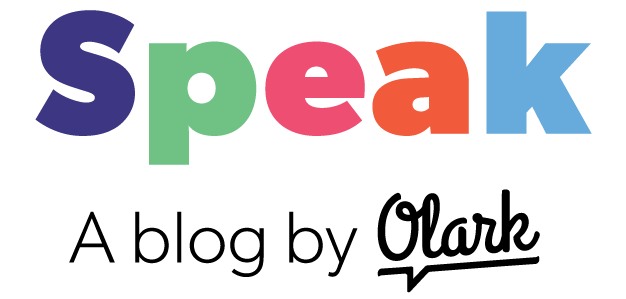Inspiring creativity in a remote team means bringing your whole self to work.
As a product manager and musician, I’ve seen that small moments of openness can cement your team’s—or band’s—ability to collaborate.
I came back to Olark after a year at a different company. Although I was glad to be back, I felt distance when working with my teammates.
For awhile, I struggled in silence. Since Olark was a fully remote workplace (for years before that was a trend), no one could really see my challenge. But the barrier was there, quietly disrupting our flow. I had to surface it.

Finally, in our regular one-on-one Zoom meetings, I shared with my team. “It’s awesome to be back, and I love working with you,” I told them separately. “But even though I’m not new, I’m also not totally familiar to you. That feels weird to me.”
“Give it time,” they said. “I know exactly how you feel,” another returning coworker said. “Don’t force it. Let it go, and everything you need will come back.”
Being open, and being received with genuine support, were the first steps toward flowing with my team again.
Fast forward to a few months ago.
We had a tough product decision to make that would shape several quarters of work. The product area raised some doubts, and I heard pushback. “We don’t have the expertise here. We’re never going to get it done… we don’t know this technology.”
Openness about their doubts was a gift. It helped pinpoint the source of the issue.
I felt instinctively that my team needed to see something physical to inspire them. So, drawing from my developer background, I built a prototype.
Engineers always want to make code that looks good. It’s a form of self-expression. My code for this prototype wasn't pretty. But I knew that to get ideas flowing, sometimes you need to throw out something rough, imperfect.
Presenting it to my team still felt vulnerable, like presenting a raw musical demo recorded on your cell phone.

On the crowded Zoom call, I couldn’t see most of my teammates’ eyes responding. But in Slack, I saw thumbs up and other silent approval roll in. I relaxed.
My duct-taped prototype generated great conversation. Soon after, we started building.
If you, the manager, are willing to look silly or unpolished first, you’ll empower your team to be themselves, and to take creative risks. We don’t make this happen alone... and we too can benefit from a safe space.
Creativity at work isn’t a given. The environment you build is critical.
Obviously, there are other wrinkles to this. So how exactly do you build the best creative environment in your virtual “office”? Here are my top 6 lessons for remote leaders:
1) It’s crucial to build real safety. This takes time. Start now.
Creating a safe culture sounds touchy-feely. But according to Google’s Aristotle Project, a huge, multi-year research effort, psychological safety is the single most important dynamic for effective teams.What about creativity specifically? A recent research paper looked at the effects of stress on creativity in organizations. Feelings of threat led to poor cognitive performance. Many studies support this.
Examples of threat: shame, anxiety, fear of failure. (Likely to come up if someone is feeling stifled or chastized by their work culture or manager.)
By supporting safety, you’re supporting creativity too.What’s your culture’s safety level? Do you stigmatize mistakes? With my team, I take the attitude that no one’s perfect. We all make mistakes, starting with myself. It’s okay. Make it actually be okay. Your team can tell the difference.
Sharing vulnerability is also important. A few years ago, a co-worker shared her mental health situation on a group call, and how it affected her work. For me, it was powerful, as was the supportive response of senior leadership.
That was a turning point in my experience with Olark. It’s not just the courage of one person coming forward (although that helps). It’s the example that leadership sends, that it’s okay to share who you are.
We codified this sharing. For example, we do an exercise at the beginning of many calls: “If you really knew me, you would know…” This can be anything that shares team members’ real selves, like what's top of mind at home, a silly game, or some personal struggle.
A third antidote for threat is trust in your team’s abilities. Encourage them to find their best ways to tackle a creative challenge. Remote work is well-suited to giving team members space for individual reflection and creativity.
Tips: To build your team’s creative environment, lead the way in making mistakes and being vulnerable. And show you trust them: give them space to do the work.
2) Be explicit and visible in your communication.
When you’re remote, subtle signs like body language are easier to miss. Disagreement may not be “read” as quickly.That can throw a monkey wrench in your creative project, in the form of invisible resistance. As a manager, you want to surface all the thoughts in the virtual room.
It’s still possible to communicate effectively! I’ve found it’s best to be really explicit remotely, so much that you may feel like you’re repeating yourself. And even if others don't, show via your video that you’re present and listening.

I remember a time where I strongly disagreed with a team member on the creative solution for one of our tech products. It wasn’t fun, but we each plainly laid out our reasons for the disagreement. We’d built the safety to state our honest opinions.
It’s funny, but I don’t remember what we decided. The important part was that we both felt heard, could fully express ourselves, and made our decision with a full picture.
Tips: Remote creative work requires deliberate, hyper-explicit communication. Don’t be afraid to be really direct, and keep your video on.
3) Embrace and learn the tools.
Virtual whiteboards, Zoom calls, project management tools... These can be great friends to your team’s creativity.
Miro, my favorite whiteboard tool, emulates the energy of being together in a room. When we draw together, I can see different people’s pointers going crazy! We’ve used it for everything from brainstorming (often involving dinosaurs) to planning out quick sketches of product designs.

Create combos of multiple tools, like video plus whiteboard plus a timer, to simulate jamming in the same room. We even created our own tool for quick surveys on Slack. We have since opened this tool for everyone to use.
Many virtual tools also have the ability to keep a record of what you did and the context for why you did it. Change histories can help you remember the collective creative journey you took. Recording calls can let you replay conversations.
Asynchronous communication, like comment threads on a Google Doc, can also save people’s concentration when a full meeting doesn’t need to happen. You can help promote valuable solo time that way (an advantage of remote work).
Sometimes though, a video meeting is necessary. It’s important to recognize when. A quick 15-minute Zoom call could save an hour or more of back and forth on Slack.
Keep the team aligned with regularly scheduled calls and a central point of truth to track decisions. Consider Trello, Jira, a collaborative doc, or whatever is easiest for your team.
Tip: Adopt a combo of comms, brainstorming, and project tools to give your creative team the feeling of collaboration, while keeping things organized.
4) Frameworks can provide space for teams to think in.
Space is important to creativity. But so is structure. (According to some studies, a balance of freedom and constraint is optimal for creativity. In other words: use some structures, but don’t be afraid to give them a rest.)
Design sprints and Thinking Hats are two structures I like a lot. Thinking Hats are a framework for getting people in the right mindset.
For example, I’ll tell people to start with Green Hat. It’s a really open-ended mindset with no wrong ideas. I’ll ask, “How do we solve this problem?” Everyone starts going crazy with off-the-wall ideas. We could easily come up with a hundred.
When we need to focus, I might go to Blue Hat, which is about processes. What are the specific steps we need to take? Then we can take our ideas into concrete steps.

For design sprints, we use a 3-Day Sprint Kit from Google as another structure for ideation. You don’t have to reinvent the wheel. A lot of smart people have created solid frameworks to help structure your team’s creativity.
Experiment and find out what works for you!
Tip: Provide frameworks to add valuable focus and boundaries to your team’s creativity.
5) Foster “spontaneous” meetings.
One complaint about remote work I’ve seen is that people don’t run into each other spontaneously in the hallway. Supposedly this leads to decreased spontaneous insights. With a little creativity (ha!), you can fudge this pretty well remotely!We use “breather weeks” and retreat projects as a way to connect. During breather weeks at the end of each quarter, we take a break from normal work and pick our own projects! Your team can pair up with other members of the organization. This can mix it up and inject some new energy.
Olark also has fun non-work Slack channels and activities where company members wander in and out. Donut can match you randomly with fellow remote co-workers to get some synergy, and there are lots of online game platforms to help you get a game night going. Show and tell, news viewing parties, and even virtual holiday parties are also staples for us.
Tip: With project, game, and platform randomness, you can generate stimulating run-ins with your team to get those creative juices flowing.
6) Just make stuff.
Sometimes the best way through a creative block is just to throw a big effort at it.
In music, my band and I did activities that encourage high output over quality, like FAWM, and the RPM Challenge.
NanoWriMo and Inktober are examples for writing and drawing. This crazy album we put out was an output of FAWM in 2016. All the songs were improvised in one session!
One famous story of ceramics-making shows that quantity leads to quality.

At work, our creativity flows the same way. So, just jam!
Tip: When your team is blocking, push for all-out, unfiltered quantity. You can always fine-tune later.
For remote managers, supporting your team’s creativity is a different beast than in person. You need to be more deliberate in communication and structure. There are advantages too… like the easier mix of solo and collaborative time.
Over time, my team and I have had a lot more moments creating together. We don’t always agree. The ideas don’t just flow perfectly. But we feel good about speaking up, taking creative chances, and pushing one another to be our best.
As researcher Brené Brown says, vulnerability is the birthplace of creativity. As a manager (and individual contributor), you have to be willing to take the lead stepping into uncomfortable places sometimes. Change doesn’t happen overnight, but in tiny, accumulated moments that create safety. The payoff for your team and products is worth it.
How do you help your team's creativity to flow like a jazz quartet?
Psst, want to be part of our creative, supportive culture at Olark? We are looking for new teammates to help us build people-first software for small businesses.

